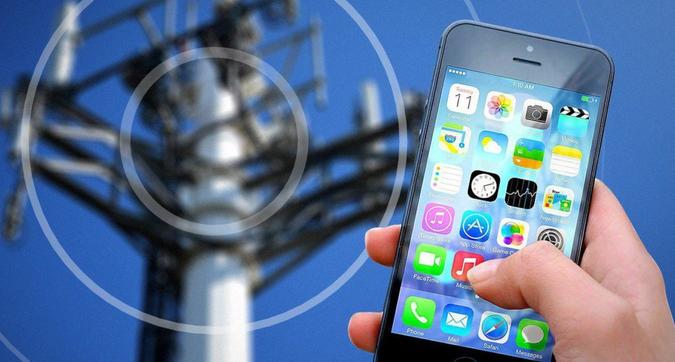While the deployment of 5G is gradually carried out - on December 1, nearly 31,000 5G sites were authorized by the National Frequencies Agency (ANFR)) in mainland France, of which around 21,000 are declared technically operational - certain areas areeven today little or poorly covered by the network.For those concerned, the use of a 4G/5G amplifier can solve these connection problems.
As its name suggests, the purpose of an 4G/5G amplifier (or repeater)) is to boost the mobile network signal to allow better reception;concretely, it captures the signal issued and multiplied it.The device obviously requires that the signal exists and is therefore unnecessary in the white area.Such a device consists of a reception antenna - to be positioned where the signal is maximum, oriented towards the nearest cell tower - of an amplifier and an internal antenna, which will relay the amplified signal.
Before having an amplifier, it is important to find out about the frequencies used by its operator.In France, 5G is currently deployed on several frequency bands: those used for 2G, 3G and 4G networks ("low" bands)) - at 700 MHz, 800 MHz, 900 MHz, 1.8 GHz, 2.1GHz and 2.6 GHz - and two new bands, at 3.5 GHz and 26 GHz.Lower frequencies have a more extensive range and better cross obstacles, while high frequencies allow more traffic to manage more.
À LIRE AUSSI :L’éditeur vidéo, un outil devenu indispensable à l’ère des « stories » ?A practice that requires the authorization of operators
4G/5G amplifiers can be easily found on the internet.Note that if the use of such a system is not illegal, it requires the authorization of the operator (s)) concerned (s)), however.Using an amplifier without this agreement constitutes an offense, subject to a criminal sanction of up to six months in prison and € 30,000 fine.A poorly configured amplifier can indeed disturb the surrounding frequencies, like a network jammer;However, relay antennas are capable of detecting this type of interference and the operator immediately refers to ANFR.

The ANFR reports that it is frequently requested (nearly 150 interventions per year)) to resolve jamming of mobile networks caused by repeaters installed without authorization.The agency also recalls that as a radio equipment, the amplifier must comply with the European directive 2014/53/EU of April 16, 2014, called RED, and therefore include a marking CE.Note that the Cartoradio site.fr de l'Anfr - which lists all the antennas emitting to more than 5 watts declared on French territory - allows us to see which operators are operating the various authorized sites, as well as the location and orientation of the antennaclosest relay in the geographic area of your choice.
For the most curious and tinkering among you, know that there are all the same online tutorials allowing to make your homemade 4G amplifier, which we can try to reproduce even by simple scientific curiosity andFor extremely short use.The link indicated, which proposes to make an amplifier using two coffee boxes, is inspired by a video offered by Popular Science, and is aimed at GSM (2G)) type telephone holders;The connection part is therefore to be adapted to current smartphones, but the procedure remains valid.
Choose your amplifier
Si vous souhaitez connaître l’intensité du signal mobile capté par votre téléphone, vous pouvez consulter les paramètres de ce dernier : pour un smartphone sous Android, rendez-vous dans la section À propos du téléphone > État > Réseau (la force du signal est indiquée en dBm)) ; pour un iPhone, la procédure est un peu différente.This is a negative number, the closer it is, the more the connection to the 4G/5G network is good.Typically, a signal that is around -40 DBM is excellent, while a signal close to -120 DBM is very bad.
À LIRE AUSSI :L’éditeur vidéo, un outil devenu indispensable à l’ère des « stories » ?Vous voulez éliminer toutes les pubs du site tout en continuant de nous soutenir ?
C'est simple, il suffit de s'abonner !
I take advantage of it
20% de rabais pour les 1000 premiers ! Code : 0pub20
The choice of the amplifier will be essentially guided by the type of network and frequencies that we want to amplify.Note that each model can extend the signal of one or more frequencies (we are talking about a bi-band, tri-band, quadri-band, etc. amplifier, etc..)).The prices obviously vary according to these capacities (count 150 to 200 euros minimum for a good amplifier)).
Le choix de l’antenne de réception du signal, qui devra être installée sur le toit ou sur la façade du bâtiment concerné, est lui aussi important : en zone urbaine, les experts recommandent d’utiliser une antenne omnidirectionnelle (il y a généralement plus d’antennes, donc le signal peut provenir de plusieurs directions)) ; en zone rurale, une antenne monodirectionnelle peut être en revanche plus efficace, à condition qu’elle soit orientée dans la bande direction. Idéalement, le câble coaxial qui relie l’antenne réceptrice à l’amplificateur doit être le plus court possible (afin de limiter les pertes)) ; il faudra en outre veiller à ne pas tordre ou enrouler ce câble pour garantir la meilleure réception possible.
Although expensive and strictly framed, using a 4G/5G amplifier can be a good solution for people in areas where network coverage is low. À noter que son usage permet, en outre, de réduire la puissance des ondes émises par les téléphones (qui est en moyenne de 250 mW maximum à 900 MHz)) : la puissance du signal émis par un amplificateur est de l’ordre de 10 mW au maximum et sa proximité demande beaucoup moins de puissance pour s’y connecter.
Laisser un commentaire
Medical deserts, public services: what assessment of Macron on rurality?
The best phones in 2021 for photos and video
What is the best Oppo smartphone to choose?
Good Plan: the recap of 4G packages on sale